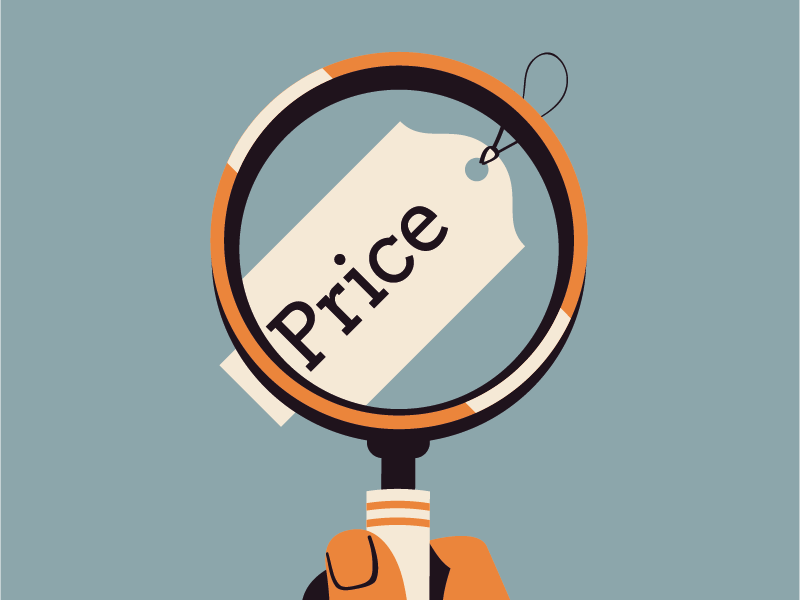‘How much is it?’ What might initially seem like the simplest of questions is often one of the most complex when it comes to buying art. It is a common misconception that a public price discourages potential buyers from engaging in conversation, but in fact research has demonstrated that the opposite is true. Transparency, in pricing and provenance, is fundamental to Dickinson’s sales policy.
At auction, prices are presented as estimate ranges (£30,000 – 50,000, £80,000 – 120,000) within which a work could reasonably be expected to sell, given the conditions of the current market. What is called the ‘hammer price’, or the highest price reached in the saleroom when the auctioneer bangs his gavel and announces ‘sold!’, could fall within that range, slightly below it, or well above it. Yet even that is still not the final price of the work: with a buyer’s premium of in excess of 30% tacked onto the sale, as well as any applicable taxes or other fees, the successful bidder could be looking at an invoice for much more than he or she anticipated.
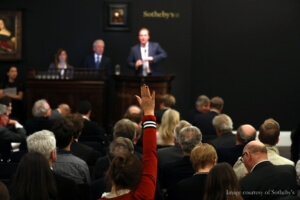

Dickinson’s Managing Director Emma Ward participating in a Sotheby’s Old Masters evening sale
The situation is scarcely more straightforward at many galleries, where prices are revealed on application only. Many buyers are, understandably, concerned that the asking price could easily change from day to day or even from buyer to buyer. For all of these reasons, over a decade ago Dickinson became one of the first fine art galleries operating at a high level to post prices on our labels at fairs and exhibitions, with the consent of our vendors. This policy requires care and vigilance, for instance when we are converting asking prices between the currency stipulated on the contract and the currency of the country where the fair is taking place. Recent studies, such as the one published by Artsy (14 August 2019), have confirmed the logic of our transparent pricing policy: their studies demonstrated that ‘inquiries were between four and nine times more likely to turn into a sale on artworks with their prices publicly available’, and that ‘an artwork uploaded with its price publicly available was between two and six times more likely to sell than one with its price hidden’.
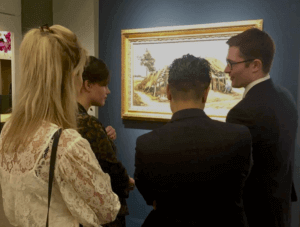

Dickinson’s Specialist, John Swarbrooke on the stand at TEFAF Maastricht 2020, discussing Van Gogh’s Paysanne devant une Chaumière, late July 1885
In addition to the asking price, our labels include any other relevant price information; we note which artworks carry import VAT or other sales tax, or are eligible for fees like Artists’ Resale Right (ARR or droit de suite). Our clients can therefore visit our gallery and art fair stands confident that our prices are transparent and fixed, and that there will be no hidden extra charges revealed during negotiation. The popularity of this policy among clients has quickly become apparent, and a number of other galleries have followed suit in posting their prices as well. The only people who do not appreciate our open pricing policy are those intermediaries who are not being open with their buyers about their own added fees.
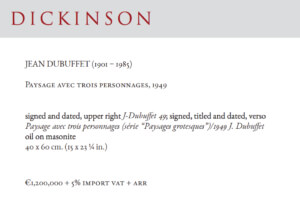

One of the labels used during TEFAF Maastricht 2020
Dickinson also continues to use red dots to identify sold works at fairs, a system that some observe has fallen out of favour recently, perhaps because it does expose a gallery that has not achieved many sales. As Managing Director Emma Ward explains, they go hand in hand with a transparent pricing policy: ‘We use dots to indicate when a work is reserved and if a second party is interested in a reserved or already sold piece, we keep that party updated or try to find another similar work that fits the request.’


Francesco Guardi’s San Giorgio Maggiore from the Giudecca, sold during the 2019 Biennale Internazionale di Antiquariato di Firenze
Although there are now more galleries with transparent pricing than there were a decade ago, the art world remains divided on the issue of providing clients with a complete sales history, with auction houses as well as dealers selectively omitting provenance information. Some might argue that it is up to the buyer to do his or her due diligence. However, given the widespread availability of price databases like artnet, and as long as the information is readily available, it saves time and fosters trust between dealer and client to be forthcoming from the beginning.
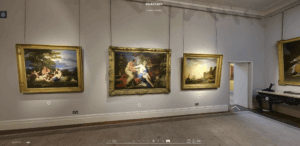

A still from MasterArt’s Virtual Gallery Tour, Dickinson London
With numerous fairs scheduled for 2020 now cancelled and physical gallery spaces temporarily off-limits due to the worldwide pandemic, galleries are increasingly turning their attention to initiating or expanding their digital programs in the hopes of attracting house-bound collectors. Many fairs are promoting digital booths, while companies such as MasterArt film virtual gallery tours. And some fairs are now making public pricing, or at least price ranges, mandatory. The art world is becoming increasingly accessible, and increasingly transparent, on the whole, thereby confirming what we have long believed: straightforward answers and a transparent pricing system earn client trust and promote sales.


